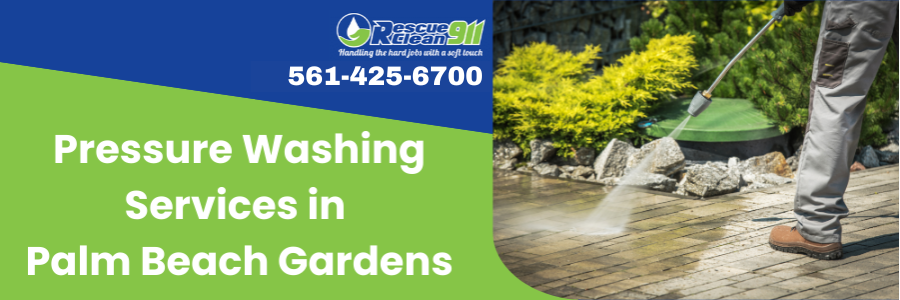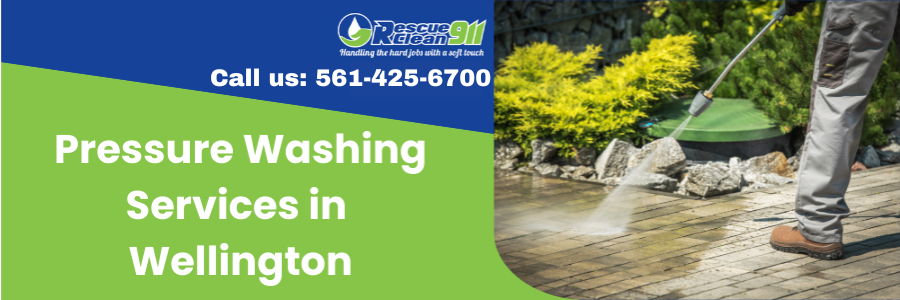Mold Remediation and Removal Services
GUIDE
Jump to a section:
Licensed, bonded, and insured, Rescue Clean 911 is ready to provide you with a free quote and fast service.
Call us at 1-833-CLEAN99 (561-425-6700) to schedule an appointment, or fill out our online form and we’ll contact you quickly to discuss your urgent needs.
Who We Are at Rescue Clean 911
As a professional cleanup, remediation, and restoration service, we know how critical it is to trust that the company you choose will be able to get rid of mold thoroughly and permanently – one that will keep you, your property, and your family or employees safe and restore your indoor air quality.
Beginning to end transparency:
- Offering a free visual inspection of the affected area
- Providing a competitively priced estimate on the spot.
- Maintaining communication with you throughout the process.
Rescue Clean 911 is certified by the IICRC (Institute of Inspection Cleaning and Restoration Certification) and by the NORMI (National Organization of Remediators and Mold Inspectors).
We are a customer-focused company that knows how challenging mold issues can be. It’s why we respond quickly, provide only the latest in mold remediation technology, and extensively train our technicians to provide the most thorough service available.
Contact Us Today
Jump to a section:
What is Mold Remediation?
Mold is all around us, in microscopic particles that aid our environment. But when mold has access to organic material and moisture, it can be incredibly damaging to the property to the point where structural repairs are required…
Mold can happen anywhere, especially since most houses are built from naturally porous materials, like wood and gypsum (the natural mineral used to create drywall).
We’re at especially high risk here in South Florida, as a result of situations that include:
- Heavy rain
- Damp areas
- High relative humidity
- Excess moisture
- Older properties and more
The Mold Remediation Process
Although you can eyeball it in some instances, an inspection is necessary to determine which level of mold remediation is necessary and how much mold damage has occurred. Here at Rescue Clean 911, mold testing is available alongside our mold inspections.
Once we know where the mold is, the next step is remediation. The process will vary depending on the extent of the mold, its location, and other factors. Read more about our Mold Remediation Process here.
Jump to a section:
Choose Us to Take Care of Your Mold Remediation Needs in South Florida
Mold seems like it should be a minor issue. Some people even try to tackle the jobs themselves, using mold remediation DIY techniques to get rid of mildew and signs of mold throughout the property. Even those who have expert handyman skills should consider choosing an experienced disaster cleanup and mold remediation company to provide support because:
- Mold is Dangerous – Small amounts of mold are unlikely to cause danger, but mold inhalation is still unhealthy, and the worse the mold is the more it can spread.
- Bacteria May Be Present – The same conditions that lead to mold can also cause bacterial growth. Improper handling of bacteria could put someone at risk for illness and infection, especially those with compromised immune systems.
- Mold Remediation Needs to Be Fast – Because mold and mildew can spread and regrow so easily, remediation efforts need to be quick.
In some situations, a mold remediation specialist is essential. Only with the right tools and technology is it possible to eliminate both the source of the mold and the areas where it has grown the most. But even with smaller mold infestations, it is helpful to at least consider a mold remediation company to give your property the care and attention it needs.
About Our Commercial Mold Removal
We also work with businesses and commercial properties throughout the region, including, but not limited to:
- Schools
- Hospitals and Senior Homes
- Restaurants
- Office Buildings
- Hotels and Motels, and More
About our Mold Remediation Pricing Model
Our mold remediation cost is determined by our Xactimate estimating software, which provides what is considered fair industry standard pricing that is directly in line with insurance company cost calculators, which means there are no surprises and no overcharging.
Jump to a section:
Schedule an Appointment Today with Rescue Clean 911
Rescue Clean 911 offers free quotes and estimates that we can provide right away. We have 24-hour services for emergencies and can assist with other types of clean-up as well – such as properties that have extensive water damage.
Give us a call at any time at 1-833-CLEAN99 (1-561-425-6700), and let’s talk about your mold problem and make sure that we can provide you with the best possible solution.
Pro Tips about Mold:
- Potential health effects and symptoms associated with mold exposure include allergic reactions, asthma, and other respiratory complaints/ health problems.
- Reduce indoor humidity (to 40-60%) by venting bathrooms, dryers, and other moisture-generating sources to the outside.
- Clean mold off hard surfaces with water and detergent, and dry completely. Absorbent materials such as ceiling tiles, that are moldy, may need to be replaced.
- Fix the source of the water problem or leak to prevent mold growth.
- Prevent condensation: Reduce the potential for condensation on cold surfaces (i.e., windows, piping, exterior walls, roof, or floors) by adding insulation.
The professional dispatcher, based on the description of your problem will instruct you on how to protect yourself and your family. The technician upon arrival will assess the situation and immediately implement a plan of action. Remember passage of time in minutes + standing water = damage to personal property (flooring, carpets, electrical and furnishings) and the structure of your home (walls, ceilings, and sheetrock) and the health of you and your family could also be compromised by mold and mildew!
What is mold removal?
Mold is a microscopic fungus that is part of the natural environment and necessary for our ecosystem. While it is necessary in the outdoor world, too much mold inside a structure can be dangerous and unsanitary. Mold produces spores as part of its lifecycle, and these spores float through the air both inside and outside.
Why is mold a problem?
Many people aren’t aware that mold can cause serious structural damage to homes and businesses, which, if left undetected, can cause a property to lose value and/or require significant repairs. And if you have ever suffered from allergies, exposure to molds can often cause nasal stuffiness, eye irritation, wheezing, skin irritation or even more severe reactions.
What does mold need in order to grow?
Mold needs a moist environment, temperatures above freezing and a food source, which could be leaves, paper, dirt, wood or other building materials. Mold is more likely to be found in damp, dusty spaces or areas with stagnant air.
How can I tell if I have mold?
If you see mold growth or water stains, a mold test can help identify related microbial activity. You can also look for areas where water leakage has occurred, such as roofs, pipes, ceilings or walls. Musty smells may also indicate the presence of mold.
What can I do to prevent the growth of mold in my home?
The most effective means to keep mold in check include keeping the humidity level of your home at 40–60 percent, using an air conditioner and/or dehumidifier during humid months and in damp spaces like basements, and always utilizing exhaust fans in bathrooms and kitchens, along with dryer vents outside your home. Lastly, if there are leaks in your roof, walls or plumbing, it is important to repair them as soon as possible.
Why does mold need to be handled by a professional remediation company?
Most experts recommend a professional remediation company when elevated mold levels are detected. Remediation professionals are specially trained to isolate and treat mold-affected areas to avoid contaminating adjacent spaces.
Some molds have the reputation of being more dangerous than others. Is identifying the mold important?
Sometimes you will hear terms like “toxic mold” and “black mold” used to refer to molds. While identifying the type of fungus or mold may be interesting, it doesn’t affect the course of action. If mold is present, the CDC has strongly recommended that it be removed, no matter the type*.
Rescue Clean 911’s team of certified technicians are on-call 24/7, and will respond quickly no matter when disaster strikes. We understand how critical it is that cleanup begins as soon as possible to limit the damage to your property, and will be there as soon as possible, day or night.
What Our Customers Are Saying
Great company, fast service and fair priced. Thank you Austen for your help with my mold issue.Kayla RodriguezAugust 4, 2023Very professional, quick and detailed. I called them to fix an AC issue I was having because it wasn’t blowing cold. Matt came out and not only fixed my AC, but he also found mold in my unit and gave me an unbeatable price to clean and sanitize the whole unit to get rid of the mold. Thank you and would highly recommend.Joey DatenaAugust 3, 2023Fantastic service from the moment I called until the moment they got rid of my mold issue! I called Rescue Clean 911 when I saw mold in my bedroom based on the 5 star reviews on Google. I’m so happy I did. Austin set the appointment same day, Matt came out, found the issue (leak under my bathroom vanity) and gave me an estimate same day. Once I signed my contract based on the estimate, they scheduled me the next day! Very happy with their services. Thank you Rescue Clean!Sabrina JaroszAugust 3, 2023Fabulous Company, Great Service, Professional Quality People, Fair and Honest Pricing, John Boca RatonJohn SeagramAugust 2, 2023Rescue 911 came to the rescue when I found unidentified water standing in the corner of my home and needed water damage restoration. Mark came to the rescue right away. His knowledge and experience of working with mold issues and remediating damage caused by water, led him to discover the source of the problem quite quickly, which was not at all obvious based on where the visual water damage was versus where the actual source of the water damage was. What was surprising was that he was already hands-on working on the discovery to help me find the source of the water damage before a single paper signed. He just went straight to help. My next surprise was that there was absolutely no pushing. Just pure patience, guidance, and support. Having water in your home, is a critical moment that could lead one to make impulsive decisions. Instead, Mark had immense patience with us so we can make the right decisions, Obviously, while taking all the steps to properly dry the home and prepare it for the work to be done. During the next days, every contractor who came to my house also couldn't help but comment how great Mark and his company was, Rescue 911. Mark was always there. Whatever questions my contractors had, big or small, he was responsive. My decisions took longer than usual because I wanted to do extra research on the rebuild and on my next steps. There were days where extra consultations were needed to speak with additional contractors. Even though Mark is super busy, running a well organized company with crews in place, he never hesitated to be there for me, and I do not just mean by phone. I mean when we needed to look at our rebuild from different perspectives and when we needed someone to think strategy with contractors, Mark was there, present, in person! - doing more than he signed up for to be 100% sure that we get things done right for us! Throughout this entire process, Mark and his team were there to see things through. He was responsive. He was present. He guided. He resolved issues. Rescue 911 is on my referral list for anyone who needs water damage restoration or mold remediation service in Wellington or anywhere in Palm Beach County. To Rescue 911, Mark and his entire operation, thank you for rescuing my Wellington home! I'm forever grateful. :)Alina DavidovJuly 29, 2023I cannot thank them enough ! Rescue clean 911 , your whole team is amazing responsive and does a great job. You were so patient and helpful during the whole insurance claim approval process and after that you came in and completed the job on the promised time. You were so responsive the whole time always available via email , call or txt msg. Nick literally helped us on every step and explained everything since it was our first time dealing with insurance companies. Thanks again for all the help and hard work. My mom’s condo is like mold free because of you. Highly recommended !!!Nil KavakMay 26, 2023First and foremost my phone calls were answered or if I had to leave a message they were returned in a timely manner. Matt was knowledgeable and walked me through the options. We decided to go with a two stage unit. Disbelief came to my house to evaluate the job. Fosnel showed up on time and the professional experience continued. Once the site evaluation was complete we received a written estimate from the office. The cost was great compared to some of the astronomical estimates we received from other contractors. My unit was installed two days ago, they shower up at the time I was told and stayed until 8pm to assure we had AC. I’ve been sleeping like a baby ever since (it’s chilly in here). Great job Rescue clean! I would highly recommend this company.Steven WrightMay 20, 2023










